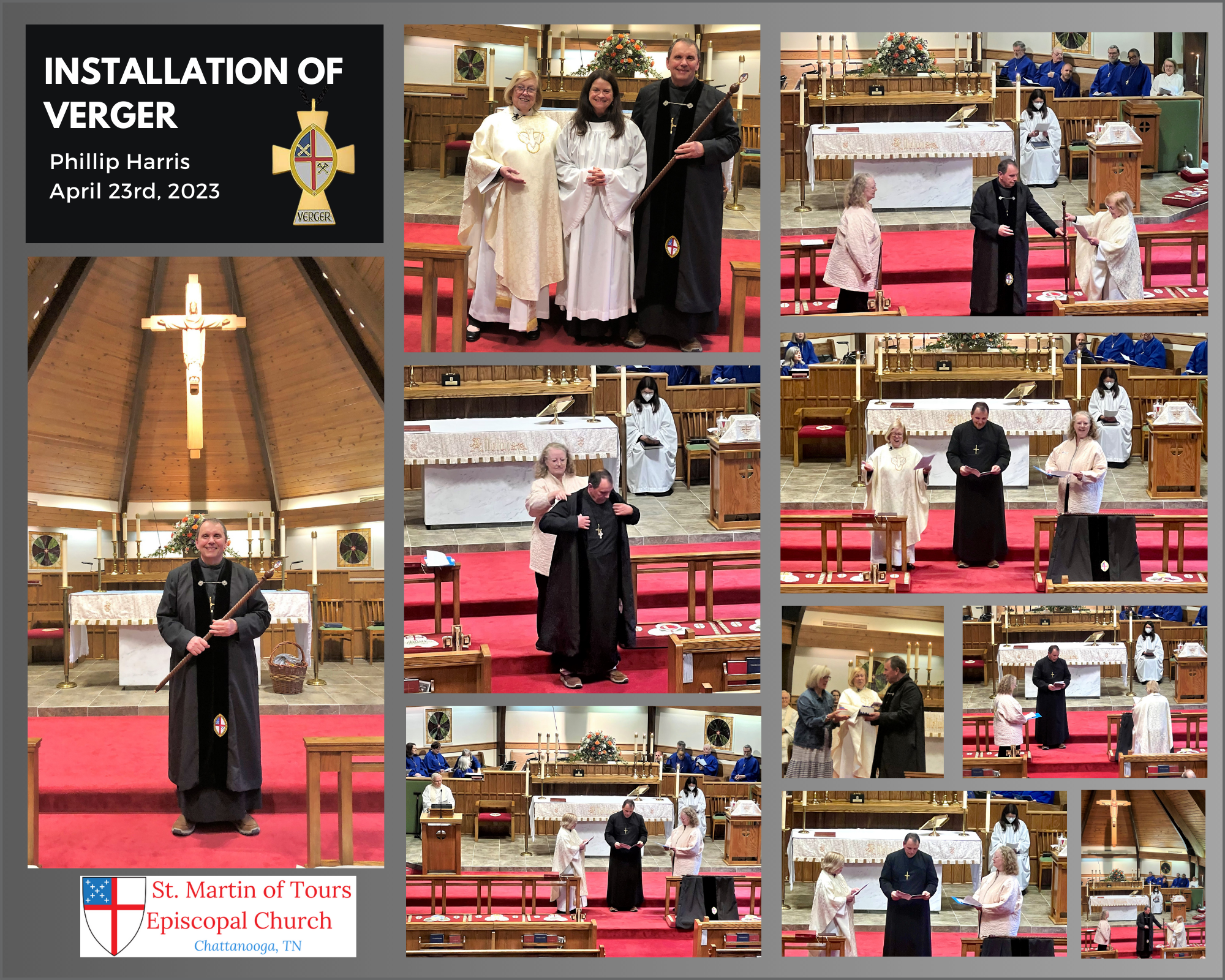St. Martin’s is blessed to have the services of two Vergers,
Phillip Harris & Emma Veys!
What is a verger?
Since the early days of the church, laypersons have been commissioned to assist the clergy in the conduct of liturgy. The position of verger developed in Medieval England where they served as the “escort and protector of the procession.” They walked before clergy, deans or bishops as they processed within the precincts of the church or cathedral. They carried a large mace or virge, used to dissuade animals or unruly people from disrupting the procession. Today the verger typically assists the clergy in liturgy planning and helps in overseeing the preparations and execution worship service.


What is a verger? The title of verger arises from the ceremonial rod they carry known as a virge (from the Latin virga, "branch, staff, rod").
Traditionally, a Verger is a lay minister who assists the clergy in the conduct of public worship, especially in the marshaling of processions. The history of the verger dates back to the Middle Ages when the verger was the “Protector of the Procession.” He would lead the way, making room for the procession to enter the church from the town square, and with his virge (mace) in hand would literally clear the way if necessary. The basic vestment of the verger is a black cassock. The ministry of vergers is supported and encouraged by the Vergers' Guild of the Episcopal Church, and Phillip completed a course of study through the Verger’s Guild.
The Verger is a layperson who serves the Church in a ministry of organization, service and welcome. It is a position that is unique to the Anglican Communion and originated in medieval England. Evidence from Rochester, Lincoln, Exeter, and Salisbury Cathedrals indicates the existence of vergers as far back as the 12th century.
A verger works under the direction of their Rector, Vicar or Priest-in-charge, and every church is unique and so is the role and duties of a Verger in that parish. Some of those duties include managing the Acolytes, Lay Minister and Readers and coordinating with the Altar Guild and Choir director or Organist. One of the most important tasks is managing of what was called “Sunday morning dynamics” (is the right color on the altar, are the Lay Ministers, readers and acolytes here or coming, are the books set properly, is the hymn board right, the doors unlocked and the sound system on, etc.) and helping out when things don’t go quite to plan. Sometimes, the Verger is called upon by their priest to help plan special services, write bulletins or customaries and guidelines. The Verger is there to help the priest with many of the everyday and mundane things that keep a parish running smoothly.
In each parish, the verger serves at the pleasure of the rector. It is an appointed position that typically assists with the logistical details prior to a service, freeing the clergy to be available to greet parishioners, welcome visitors, and respond to pastoral concerns. The visible ministry of the verger, that of escorting processions and individuals during worship is but a small portion of the ministry. The verger’s duties are about 90% behind the scenes and 10% in the service. The verger is a key individual on the worship team of a congregation with duties unique in each congregation as delegated by the clergy.
Phillip Harris

